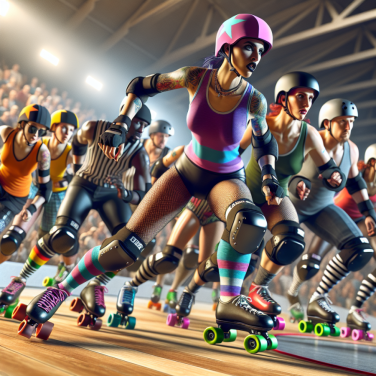The Evolution and Global Impact of Parkour: A Closer Look
Parkour, often described as the "art of movement," has evolved dramatically since its inception. The discipline, which originated in France in the 1980s, has fundamentally changed the world's perspective on urban landscapes and how they can be interacted with creatively and physically. Its evolution has seen it grow from a local practice to a global phenomenon impacting fitness, film, architecture, and education.
Origins and Early Development
Developed by the Frenchman David Belle, parkour stemmed from his father's stories of military obstacle course training. The initial idea was to move from one point to another in the most efficient way possible, utilizing largely the human body and the immediate surroundings. Belle’s innovative mindset turned everyday urban environments into vast playgrounds for physical expression, breaking the shackles of traditional fitness norms.
The Expansion of Parkour into Mainstream Culture
Parkour swiftly caught the interest of media and soon began to receive global recognition. The discipline became particularly popular in the film industry; its debut in mainstream films amazingly showcased the possibilities of human movement and agility, captivating viewers around the world. This global platform brought parkour to the masses, inviting more enthusiasts to explore the discipline.
The Integration of Parkour into Built Environments
As parkour began to gain traction globally, architects and city planners started to incorporate its principles into urban designs. This has led to the evolution of multi-purpose urban spaces that encourage free movement and fitness activities. Cities across the globe have special parkour parks designed to invite its citizens to engage more with their surroundings. The integration of such spaces has critically questioned traditional conceptions of urban design and has pushed for more versatile and interactive landscapes.
The Global Fitness Impact
With its unique and holistic approach to fitness, parkour has also influenced the exercise routines of millions around the world. The discipline not only promotes physical strength and agility but also hones coordination, balance, spatial awareness, and mental acuity. Parkour classes are omnipresent, appealing to individuals keen on stepping out of conventional gym workouts into more dynamic and engaging routines.
The Educational Power of Parkour
Beyond fitness and urban exploration, parkour is also a powerful educational tool. Many educational institutions have incorporated parkour into their physical education curriculum to help boost confidence, teamwork, and creativity among their students. These skills are integral to personal development and are built in an engaging and enjoyable manner through parkour.
Read also:
The Evolution and Impact of Tennis: A Sport of Grace and Strategy
Understanding the Physical and Mental Foundations of Parkour
Parkour was developed in France from military obstacle course training and merges practices from a diverse range of disciplines including gymnastics, martial arts, and climbing. This comprehensive kinetic discipline places notable emphasis on both the physical and mental elements of human movement. To delve deeper, we must first unravel the physical foundations of Parkour before examining the psychological facets that make it such a compelling pursuit.
On a physical level, Parkour involves navigating one's environment using only the natural strength and agility of the human body. It’s an art that encompasses running, climbing, vaulting, jumping, rolling, and more, in a continuous, fluid motion. It essentially is a physical, hard-style martial art that focuses on real-world functionality. For instance, traceurs (practitioners of Parkour) demonstrate their nimble arts on a variety of surfaces like walls, railings, and rooftops. This physicality requires exceptional levels of fitness, including strength, flexibility, and endurance.
The physicality comes from a diverse array of movements. At its core, Parkour training often includes static exercises, plyometrics, and dynamic movements. Static exercises focus on improving strength and flexibility such as handstands, L-sits, and split squats. Plyometrics or 'jump training' fosters explosive, powerful actions that aid in overcoming obstacles like box jumps, depth jumps, and broad jumps. Conversely, dynamic movements are those alluring, fluid actions we traditionally associate with Parkour and involve movements like arm jumps, wall runs, and precision jumps.
On the other hand, Parkour isn’t purely a show of physical strength and agility. The mental aspect of Parkour is just as crucial. Considered an art of displacement, its psychological facet focusses on overcoming psychological obstacles as much as navigating physical obstructions. Traceurs often describe a sense of freedom and liberation as they overcome urban landscapes, infusing a sense of creativity and individuality into their movements.
It’s paramount for traceurs to develop excellent spatial awareness and be able to make quick decisions under pressure. For instance, a traceur traversing a high wall needs to ascertain the best route, possible risk factors, and backup plans within split-seconds, underscoring the need for a proactive, strategic mindset. This mental component runs parallel to the physical necessity of agility and strength, cultivating a profound synergy between the mind and the body.
Moreover, overcoming fear and building confidence are vital aspects of the mental training in Parkour.




